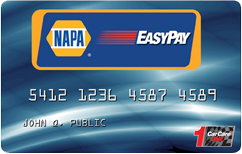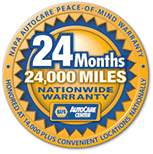The importance of stopping your car precisely when you need to cannot be overstated. To avoid an unexpected collision, your car must stop at that exact moment when you apply pressure to the brake pedal. Otherwise, you run the risk of losing control of the vehicle and not being able to avoid a crash. This, of course, is very dangerous for everyone involved.
Despite the grave risks of doing so, many drivers put off auto brake repair because they don’t want to deal with the hassles or expense. Other times, drivers may not be aware of the signs that their car, truck or SUV needs brake repair. No car manufacturer, even BMW, Audi, and WV, are immune to brake problems.
Top Signs Your Vehicle Requires Brake Repair-
Dashboard Light Turns On
Okay, this is the clear and obvious sign. If your vehicle’s dashboard light for brake repair lights up, this is a no brainer you need to drive your car to a San Diego auto repair shop for a brake system inspection. This dashboard light looks like a circle with an exclamation point inside it. This brake repair indicator light may also say “ABS” with a circle around it to signal that the automatic braking system needs inspection.
Now to be fair, this light won’t always go on when it should and some older model vehicles may not have this indicator at all. But if you see a circled exclamation point light up on the dash, that’s a clear sign something is amiss with your braking system.
Super Skinny Brake Pads
Take a few moments to perform a visual inspection of your brakes. Unlike other components of your vehicle, inspecting the condition of your brakes is fairly simple and doesn’t even require popping the hood. Located in plain sight, observe the brake disks on the wheel. Brakes work when the clampers squeeze the brake pads onto the rotors forcing the car to stop when the brake pedal is applied. Time, friction, and regular use cause brake pads to wear down, which means brake repair is needed. Take a closer look and you can readily see the thickness of these brake pads. If the pads are less than a quarter-inch thick, it is time to get them replaced.
Though it may vary from vehicle to vehicle, brake pads need to be replaced approximately every 40,000 to 55,000 miles. If you do a lot of city or stop-and-go driving, plan to get this brake repair performed more often.
If the brake pads wear out completely, the clampers will compress onto the rotor and you will have metal-on-metal friction — not good. This could ruin your rotors and possibly your entire braking system. Moreover, a car with worn-out brake pads will not be able to stop properly, which puts you at risk for a crash.
Screeching Sound From Brakes
Do your brakes make an awful, metal on metal screeching when applied? As we discussed previously, if the brake pad is worn out and you have the unpadded clampers squeezing down on the rotors, that’s where this shrieking sound comes from.
This wincing sound is a signal to bring your car into a San Diego auto repair shop for a brake inspection. If you wait too long, you are at risk of damaging your rotors and then you will need to get two brake repair jobs performed, brake pad replacement and rotor replacement. Minimize your brake repair cost by taking care of your brake pads. Again, it is dangerous to drive on worn brake pads because your car won’t be able to stop when you want it to.
Vibration or Shaking Of Vehicle
Does your car’s lower panel or pedal area start to vibrate or pulsate when you apply the brakes? This could signal a few different things including brake repair or front-end suspension repair. A misaligned suspension system under the front end of your vehicle could be causing the brakes to shake or vibrate when pressed. It could also signal that your rotors are somehow bent or warped.
In order to determine the root cause of the problem, a mechanic will have to inspect the underbelly of your car. Either way, you will want to get this problem taken care of right away. The more you drive on a bad suspension system or faulty brake rotor, the more damage you are causing to your vehicle. It is also unsafe to drive a car in this condition because the quality of your brakes has been compromised.
Car Pulling To The Left or Right
Does the vehicle seem to pull to one side or the other on its own? Again, this could signal a brake or suspension problem, depending on what is going on underneath the car. The suspension system could be misaligned or lopsided, which means you will need suspension repair or adjustment.
It could also mean that one brake is worn down significantly more than the other. It could also signal that a clamper has become too sticky and is holding down on the rotors too long instead of quickly releasing. Whatever the case, bring your vehicle in to your local auto repair shop to find out what the problem is and get the necessary auto repair.
Unresponsive Brake Pedal
When you apply the brakes, does it seem as if the pedal is limp and not responding? Do you have to really stomp on the pedal to get it to work? Undoubtedly this is not a good situation because your vehicle needs to be able to stop immediately when you apply the brakes.
More often than not, floppy pedals signal something is amiss in the brake line. It could be a hole or leak in the brake line or too much air in the brake line. A puddle of extremely slick clear fluid underneath the car is a sign you have a brake fluid leak. In such a situation, brake repair needs to be performed right away. Without sufficient brake fluid in your vehicle, your car won’t be able to stop at all. It is the equivalent to driving around without brakes, yikes!
Work With A San Diego Repair Shop Today
While some minor auto repairs and services can be put off until your next paycheck, you should never postpone necessary brake repair. Brake repair costs can be kept to a minimal if it’s performed at the first sign of a problem. Delay at your own peril and be sure to work with your local San Diego auto repair shop for all your automobile needs.






